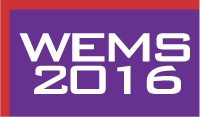Speakers
Description
Vanadium oxides belong to the strongly correlated transition metal oxides exhibiting diverse temperature-dependent electronic, magnetic, and catalytic properties. They have wide potential applications in temperature sensors, optical and electronic devices and catalysts.
A large variety of the vanadium oxide phases have been reported, including VO (rocksalt structure),V2O3 (corundum),VO2 (rutile),V2O5 (layered orthorhombic), and Magneli phases, the homogeneous series of VnO2n-1 (3 ≤ n ≤ 9) which can be considered as intermediate structures between the end members VO2 (n →∞) and V2O3 (n = 2). Depending on a change of a thermodynamic parameter (such as pressure and temperature), or with variation in phase composition, phase transformations between these oxides can occur, which may lead to. With the exception of one Magneli phase (V7O13) and the highest-valence vanadium oxide (V2O5), most of the vanadium oxides undergo metal-insulator transitions (MITs) as functions of temperature. These complex structural and electronic transformations may involve the formation of mixed valence phases. The determination of cation oxidation state and site distribution in mixed metal oxides may be difficult in cases in which the cations exhibit variable valency.
In this presentation, we report the emission Mössbauer Spectroscopy (e-MS) measurements following implantation of 57Mn on the VO2 and V2O3 thin films prepared under different growth conditions with magnetron sputtering. The technique combines Coulomb excitation of the Mössbauer-active state with the recoil implantation of the excited atom. It has the high sensitivity and allows working at low and high temperatures to probe the temperature-induced phase changes in the VO2 and V2O3 thin films.
